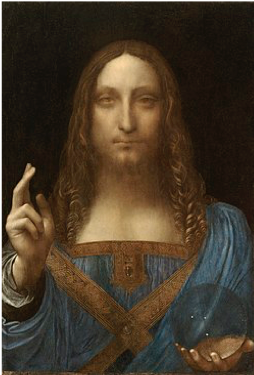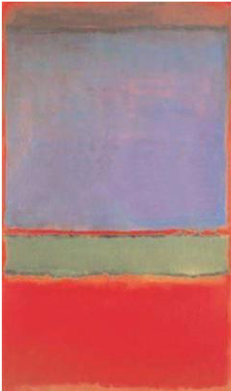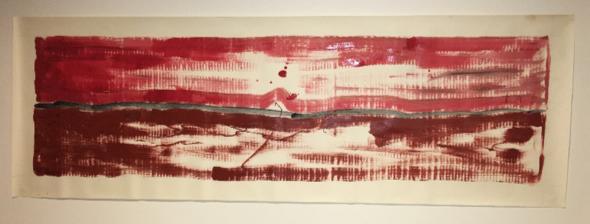I assume that nobody who has been to Hanken this year has missed that Hanken is celebrating its 110th Anniversary with creativity / ART as the main topic. Art that splits opinions! I will not go into the discussion of what is good or bad, nice or ugly, understandable or completely non-understandable art. No, let us be more serious! Let us talk about money (that should fit a business school blog).
For years I have been wondering how art is priced, how art paintings are valuated. In search for an answer to this, maybe not the world´s most important question, I have done some desk research (googled around), and the answer is there. A very simple formula according to Lori Woodward at Artistsnetwork: a formula with three quantifiable variables.
ʃ(art painting price) = size * labor + material
For pricing an art painting, we should calculate the size of the canvas (length * breadth) and multiply that with 6$ per square inches (labor costs based on earned practice, Artistsnetwork.com) or 0,93€ per square centimetres. Conclusion is that “size matters”, and of course the cost of materials will rise if we use a larger canvas and more paint, which we should take into account when pricing.
Let us calculate. I found an A4 size paper (29,7 * 21,0 cm) in my trash, and I use a pencil I borrow from my colleague (no costs there) and draw a boat. This implies that the price tag on my painting should 580,00€ . Nothing is said about my drawing skills, motive of the painting, painting styles, etc.
For real, this is the formula offered when you read art blogs and try to find support for how to decide on price!
This cannot be the true formula, of course not. But let us till stay with this simple formula. In year 2014 a painting of a size of 65,6 * 45,4 cm was sold for 453 000 000$ (410 776 000€). Let us assume that the material costs are 500€ (maybe way too much). This ends up with a labor cost of 137 425,75€ (= price of a square centimetre), which is far different from the recommended 0,93€. Ok, I am not da Vinci, I cannot paint (definitely not a picture of Jesus), and I am still alive (as we know when artists die, their works tend to increase in price) (picture 1).
Picture 1. Salvator Mundi (Leonardo da Vinci)

Source: https://en.wikipedia.org/wiki/Salvator_Mundi_(Leonardo)
Back to Hanken, and the contemporary art paintings, can they be of value?
Now comes the reason why I picked pricing of art as my topic for my autumn 2019 blog. In searching for the most expensive art paintings in the world, in the place number 7 we find art piece “No 6” by Mark Rothko (picture 2) sold in the year 2014 for 186 000 000$ (168 663 000€) (https://www.infoplease.com/top-10-most-expensive-paintings-ever-sold). I can also paint three colours, and you remember the formula – I can make a very big painting too.
Picture 2. No. 6 (Mark Rothko)

Source: https://en.wikipedia.org/wiki/No._6_(Violet,_Green_and_Red)
Pricing of art is art in itself. More reading highlights that I (if I decide to become an art painter) should do some research, we may even call it a market analysis. Recommendations I get are:
1) I should give my painting a name
2) I should compare and set price in line with other painters in the same category (type of painting and market). I should not stick out in terms of price
3) I should have consistency in my pricing. If I sell my art in many channels the price should be the same
4) I should not give friends discount (at least not much)
5) If commissioners are used, I should add the extra costs, and
6) if I have many paintings a master Price List should be created (https://www.format.com/magazine/resources/art/how-to-price-your-art.com).
With all this knowledge, I cannot hold back (I must give it a try). I have one painting, only to be sold in one channel, and I position it in the same category as Mark Rothko, abstract expressionism, and I give my piece a name “Thesis_redonred#1” (you recognize the number, my point is that if I get it sold there will be a number 2 but no more, limited edition you see) (picture 3). By this, and the price is not negotiable, I ask 27 459 248€ for my 38 x 135 centimetre sized painting (5 352,68€/square centimetres = the same as Mark Rothko).
Picture 3. Thesis_redonred#1 (Peter Björk)

Source: Foto, Hanken / Vasa
You may say that I am out of track for two reasons: 1) my painting is not art, and 2) my price is wrong. First, look at the art at Hanken, I think my painting fits in. Second, the price is wrong. Right, here we have a small catch. There is a difference between what I am asking and what it is sold for, meaning that there must be someone willing to pay the price (why must everything be so complicated?)
In my reading, trying to understand the mechanism of pricing of art, there comes another clear signal. I should namely target my offering to a certain segment, those who purchase art not only for the reason of an investment but for all the branding value it brings to them, be it a single person, an organisation, a company or a country (Savior of the World in picture 1 was bought by Saudi Arabia). This brings me to the conclusion that high-end art business is not at all about the painting (or very little), but about everything else: the painter, the story of the painting, and craziness – let us call it marketing.
Professor
